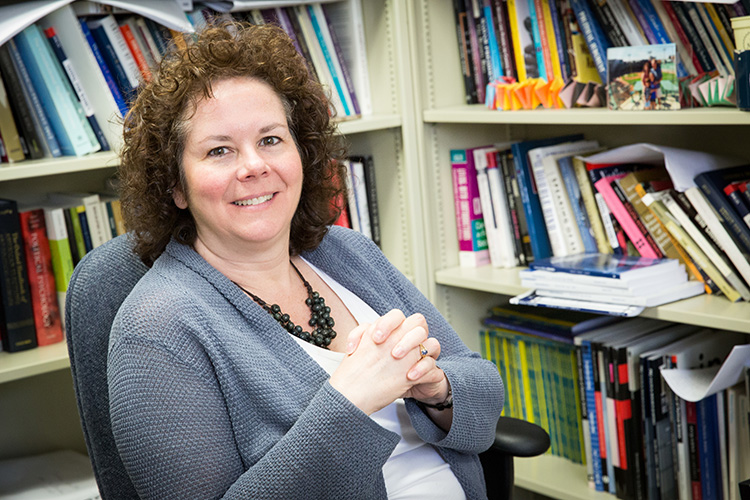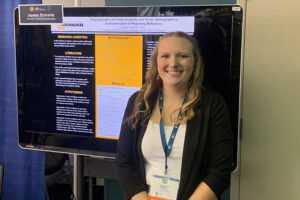With two women running for president, it’s natural to ask whether we’re at a special moment in the country’s political history. Political scientist Kathleen Dolan specializes in the role of women in politics, and she shared her thoughts about the past, present and likely future of American women who run for elected office.
George McGovern famously said it would be easier to elect a black man president than a white women. We’ve elected a black man…
And we may elect a woman. We will have to see. But it is important to keep in mind that Hillary Clinton didn’t lose the Democratic nomination in 2008 because she was a woman. There were lots of traditional political influences at work – alongside the race and sex of the candidates – that shaped that election.
With regard to electing a woman president, one important explanation is the “pipeline” theory of candidacy. In general, successful presidential candidates are people who have served either in the U.S. Senate or as governors, and who served in lower state offices prior to that. While we’ve had – and have – women in those offices, there haven’t been as many of them as there have been men and they haven’t been serving as long. So to have more credible women candidates for president, we need more women with experience as senators or governors.
Do we have enough women running for office?
Roughly 20 percent of candidates for Congress are women – 65 percent of women candidates are Democrats, by the way – and 20 percent of U.S. representatives are women. If 20 percent of the candidates are women, you can’t expect them to be 50 percent of the body.
The pipeline will continue to be disproportionately male until more women become candidates.
This isn’t just a gender phenomenon: We don’t see a lot of African Americans in these higher offices, and it may be some time before the country elects another black person as president.
Similarly if Clinton is elected, it’s probably going to be a while before another woman is elected. There just aren’t as many women in the pipeline.
Other nations have elected women to their highest offices: Indira Ghandi, Margaret Thatcher, Angela Merkel – Golda Meir, a UWM graduate. What makes the U.S. different?
There are some important structural features operating here.
First is our presidential system. Many other countries use a parliamentary system for selecting their leaders. In the U.S., you vote for a person, whereas in England and Germany for example, people vote for a party, which then choses its leader. The leader of the ruling party serves as the prime minister.
Secondly, in the U.S. individuals run in winner-take-all elections, while many other countries use proportional representation. If you think of our House of Representatives, the members are elected one by one by one. If we elected our U.S. representatives in a proportional system, people would vote for either the Democrats or the Republicans and if the Republicans got 55 percent of the votes, they get 55 percent of the seats in the legislature – but the parties would have lot more choice about who the office holders were.
So in proportional systems, women can get a lot more representation because it’s a smaller number of people who have to be convinced that women are viable candidates. The parties wouldn’t have to rely on voters in 435 districts around the country being on board with voting for more women.
For example, Margaret Thatcher was very much a self-starter and very political, and she fought a hard-fought campaign to become the prime minister. But once the conservatives won the election, she only had to get about 40 party members to support her for prime minister. That’s very different from Hillary Clinton having go around to 50 different states and win primaries in all of those states and gather the delegates. It’s just a fundamentally different exercise.
Finally, a lot of other countries have quota systems, in which a certain percentage of candidates have to be women. The quotas are set by law; a party can’t run in an election if they don’t meet the quotas.
This last feature suggests a cultural element.
Cultural and psychological. It’s interesting that women are much less likely to see their own characteristics as qualifications for politics, and men are much more likely to see themselves as having the right qualifications and experiences for politics. Women recognize the same qualifications in themselves as their male counterparts, but they weight them differently than men.
Now, we see that when women are approached and asked to run for office, they are much more likely to do it. That suggests that a quota system might have an impact: It motivates the parties to find female candidates.
There’s another cultural factor – one of the things we know is that until very recently American women tended to start their political careers at an older age than men. So they have had less time to progress in a political career.
We do see younger women starting to run for office now, which mirrors gender changes in American families.
We’ve been talking about women as candidates, but what about women voters?
Lots of people assume that women vote for women because of some shared gender identity. There is no evidence to support that. Now, the vast majority women who run for office in the United States run as Democrats, and women voters are more likely to be Democrats than Republicans. So it might look like more women are voting for Hillary, but that won’t be because they are women, it’s because they are more likely to vote for Democrats.
Hillary Clinton has an excellent chance of winning the Democratic nomination. But if she does, it will be because she is able to convince men and women to vote for her. She will not be elected simply because of the votes of Democratic women.







